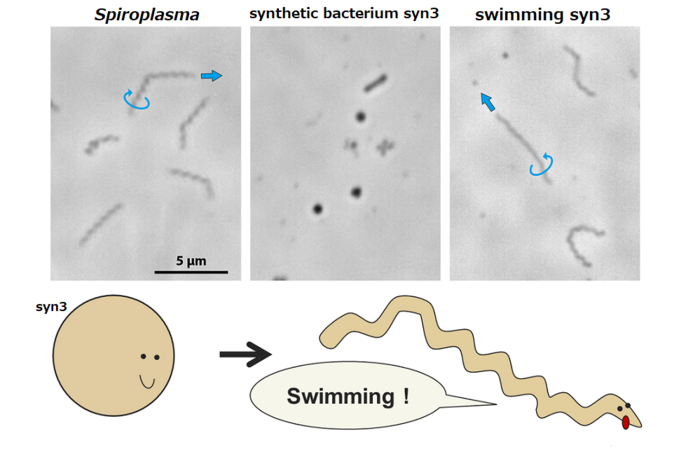The origin of all biological movements, including walking, swimming, or flying, can be traced back to cellular movements; however, little is known about how cell motility arose in evolution.

Credit: Makoto Miyata, Osaka Metropolitan University
The origin of all biological movements, including walking, swimming, or flying, can be traced back to cellular movements; however, little is known about how cell motility arose in evolution.
A research team led by graduate student Hana Kiyama, from the Graduate School of Science at Osaka City University, and Professor Makoto Miyata, from the Graduate School of Science at Osaka Metropolitan University, introduced seven proteins, believed to be directly involved in allowing Spiroplasma bacteria to swim into a synthetic bacterium named syn3—through genetic engineering. syn3 was designed and chemically synthesized to have the smallest genomic DNA possible including the minimum essential genetic information required for growth from the smallest genomes of naturally occurring Mycoplasma bacteria.
“Studying the world’s smallest bacterium with the smallest functional motor apparatus could be used to develop movement for cell-mimicking microrobots or protein-based motors,” said Professor Miyata.
This genetically re-engineered syn3 changed from its normal spherical shape into a spiraling helix, which was able to swim by reversing the helix’s direction just like Spiroplasma. Further investigation revealed that only two of these newly added proteins were required to make syn3 capable of minimal swimming.
“Our swimming syn3 can be said to be the ‘smallest mobile lifeform’ with the ability to move on its own,” said Professor Miyata. “The results of this research are expected to advance how we understand the evolution and origins of cell motility.”
Watch the video explaining the study at https://youtu.be/VAY71FemC24.
###
About OMU
Osaka Metropolitan University is a new public university established by a merger between Osaka City University and Osaka Prefecture University in April 2022. For more science news, see https://www.upc-osaka.ac.jp/new-univ/en-research/, and follow us @OsakaMetUniv_en, or find us on Facebook.
Journal
Science Advances
DOI
10.1126/sciadv.abo7490
Method of Research
Experimental study
Subject of Research
Cells
Article Title
Reconstitution of a minimal motility system based on Spiroplasma swimming by two bacterial actins in a synthetic minimal bacterium
Article Publication Date
30-Nov-2022




